#anton hoffmann
Explore tagged Tumblr posts
Text

Louis IV, Holy Roman Emperor by Anton Hoffmann
#anton hoffmann#art#illustration#louis iv#ludwig iv#louis the bavarian#ludwig der bayer#ludwig the bavarian#holy roman emperor#holy roman empire#medieval#middle ages#armour#knights#knight#emperor#german#germany#history#europe#european#bavaria#bavarian#king
294 notes
·
View notes
Photo


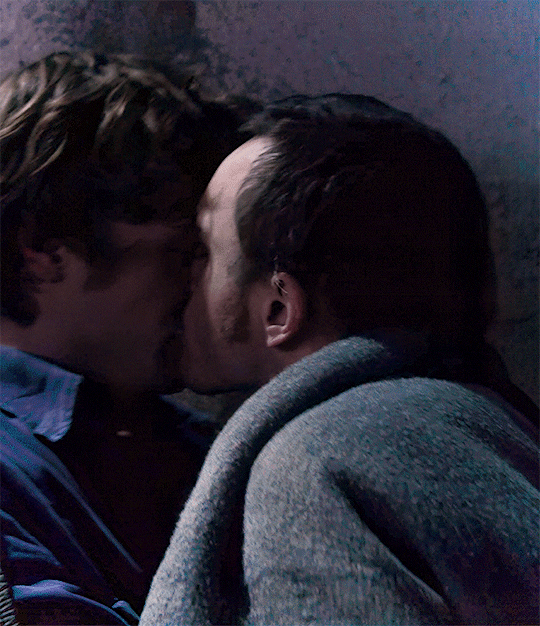

FRANZ ROGOWSKI & ANTON VON LUCKE 2021 • Great Freedom (Große Freiheit) • dir. Sebastian Meise
#proud of the colouring bc this scene is shot as SOOO DARK#franz rogowski#anton von lucke#große freiheit#great freedom 2021#filmedit#lgbtedit#perioddramaedit#kiss#gay couple#lgbt#intimacy#affection#gay#hans hoffmann#film#movie#period drama#paragraph 175#romancegifs#queer#queer media#sebastian meise#moviegifs#filmgifs#deutsche#couple#longing
324 notes
·
View notes
Text
youtube
Heinrich Anton Hoffmann (1770-1842)- String Quartet in B-Flat Major, Op. 3, No. 2
I. Adagio - Allegro 00:00 II. Menuetto. Allegro sostenuto 8:52 III. Thema con variazioni 13:52 IV. Rondo. Allegro scherzando 19:32
Performer: Alte Musik Köln.
0 notes
Text

Artist Anton Hoffmann b. 1863, mounted soldier
27 notes
·
View notes
Photo

Beer Hall Putsch
The Beer Hall Putsch or Munich Putsch was a failed attempt by the German National Socialist (Nazi) Party to seize power, first of the Bavarian and then the German federal government on 8-9 November 1923. The coup, led by Adolf Hitler (1889-1945), failed because other right-wing politicians, the police, and the army did not give their support.
The Nazis & the Crisis of 1923
Hitler became leader of the Munich-based NSDAP (National Socialist German Workers' Party) in 1921, taking over from Anton Drexler (1884-1942). The party was neither socialist nor at all interested in workers, but Hitler had chosen the name to give his ultra-nationalist party as wide an appeal as possible. Known as the Nazi Party, it was also vehemently anti-Semitic and against the German establishment, which it saw as the root of all ills, everything from the signing of the humiliating Treaty of Versailles which formally closed the First World War (1914-18) to hyperinflation. The Weimar Republic, as Germany was now known, was beset by weak coalition governments, which struggled to cope with a series of severe post-war challenges. By 1923, the Nazi Party had over 55,000 members, although this was much fewer than the Social Democratic Party, for example, which had 1.2 million members.
In the summer of 1923, the German government was in the middle of yet another crisis. France had invaded parts of the heavily industrialised Ruhr in western Germany in order to force the country to make good on its obligations to pay France war reparations. The government declared a state of emergency, and the army was given chief executive power. In Munich, the leader of the local government, Gustav Ritter von Kahr (1862-1934), the local army chief, and the chief of the police force were all given extraordinary powers to deal with the crisis. All were right-wing in political orientation, and Hitler saw this as an opportunity to take power, or, even better, to force an invitation to take power from what he considered like-minded politicians and army figures. Hitler ultimately intended to march on Berlin, much like the Italian fascist dictator Benito Mussolini (1883-1945) had marched on Rome to seize power in October 1922 (when the Italian king felt obliged to invite him to power). First, Hitler would deal with Munich, and his primary weapon would be his own paramilitary followers.
The Nazis used a paramilitary group, the SA (Sturmabteilung) stormtroopers, to frequently rough up the political opposition and generally strut about looking important. The SA, led by Ernst Röhm (1887-1934), even became too powerful for Hitler's liking, and so he created his own personal bodyguard called the Stosstrupp-Hitler (Hitler Shock Troop). Stosstrupp members included Julius Schreck (1898-1936), Joseph Berchtold (1897-1962), Ulrich Graf (1878-1950), Hermann Göring (1893-1946), and Rudolf Hess (1894-1987). Other key supporters of Hitler included General Erich Ludendorff (1865-1937), the WWI veteran who had found himself out of favour with the Weimar establishment ever since the armistice. Hitler hoped General Ludendorff would be a respectable figurehead for a Nazi-driven coup d'etat.
Nazi Gathering, Bürgerbräukeller
Bundesarchiv, Bild 146-1978-004-12A / Hoffmann, Heinrich (CC BY-SA)
Continue reading...
18 notes
·
View notes
Text
25 Christmas Short Stories To Read This December

The Gift Of The Magi by O. Henry
A Christmas Dream by Louisa May Alcott
The Adventure Of The Blue Carbuncle by Sir Arthur Conan Doyle
How The Grinch Stole Christmas by Dr. Seuss
The Polar Express by Chris Van Allsburg
Christmas At Red Butte by L.M. Montgomery
The Little Match Girl by Hans Christian Anderson
The Christmas Banquet by Nathaniel Hawthorne
A Christmas Memory by Truman Capote
The Tailor of Gloucester by Beatrix Potter
At Christmas Time by Anton Chekhov
A Merry Christmas by Louisa May Alcott
The Christmas Guest by Peter Swanson
The Dead by James Joyce
The Elves and The Shoemaker by The Brothers Grimm
A Child’s Christmas in Wales by Dylan Thomas
A Hint for Next Christmas by A.A. Milne
The Nutcracker and the Mouse King by E.T.A. Hoffmann
The Adventure Of The Christmas Pudding by Agatha Christie
The Burglar’s Christmas by Willa Cather
A Letter From Santa Claus by Mark Twain
The Fir Tree by Hans Christian Anderson
The Greatest Gift by Philip Van Doren Stern
The Legend Of The Christmas Tree by Lucy Wheelock
Papa Panov’s Special Christmas by Leo Tolstoy
#books#book blog#booklr#readblr#book reccs#book recommendations#bookaddict#bookblr#bookworm#books and reading#christmas#christmas cheer#christmas time#christmas books#christmas gift
16 notes
·
View notes
Text
Autumn Reading Challange
My favorite season of the year has arrived! With pumpkin-flavored cookies and flavored green teas and black turtlenecks matched with jackets, it's time for a new reading list. I didn't have much success in the summer, that's why I hope that everything will go better in the autumn. I tried to choose books that keep the atmosphere specific to the spooky season, but I'm not a fan of modern horror, so my selection is more towards mystery, drama, gloomy, spleen.
I will soon start my last year of my master's degree, so I am returning to an old passion of mine, philosophy. I tend to immerse myself too much in work for whole months, so I work with myself now to make reading my quiet moment that I need every day. Wish me luck!
From: 01.09.2023 - 30.11.2023 (European calendar)
Fiction
Dead Souls // Nikolai Gogol
The Red Room // August Strindberg
The Gothic Rooms // August Strindberg
Haunted // Chuck Palahniuk
In Cold Blood // Truman Capote
The Call of Cthulhu // H.P. Lovecraft
Slaughterhouse-Five // Kurt Vonnegut
And Then There Were None // Agatha Christie
Human Lost and Other Short Stories// Osamu Dazai
Confessions of Felix Krull // Thomas Mann
The Demons // Fyodor Dostoevsky
The Virgin Suicides // Jeffrey Eugenides
Artificial Paradises // Charles Baudelaire
The Metamorphosis and other stories // Franz Kafka
The Devil's Elixirs // E. T. A. Hoffmann
The Crime of Olga Arbyelina // Andreï Makine
Carrie // Stephen King
Frankenstein // Mary Shelley
Fahrenheit 451 // Ray Bradbury
A selection of nuvellas // Anton Cekhov
Philosophy
Dialogues // Plato
Metaphysics // Aristotel
Prolegomena to Any Future Metaphysics Article Talk // Immanuel Kant
Logic // Immanuel Kant
Tractatus Logico-Philosophicus // Ludwig Wittgenstein
12 notes
·
View notes
Note
hi i have a little 18th century german boy oc and u r the only german person ik . i want to strike a deal . if u suggest German names i will give u cat pictures
A lil 18th century German oc? Oh boy oh boy those dudes had terrible names like Gerhard, Eberhard, Reinhard…lots of hard huh…
But here are a few German names (also a bit Nordic, cuz I’m a bitch living in the north and c’mon Hanse <33) which I believe to be rather timeless and free of the grandpa stamp:
-Hans
-Erik (also Eric)
-Anton
-Till
-Emil
-Mats
-Fiete
-Lars / Lasse
-Konrad (also Conrad)
-Fred
-Moritz
-Jannik (also Jannick, Yannic, Yannik, Yannick…)
-Gustaf (also Gustav)
-Arne
-Phillip (also Fillip)
-Finn
-Jakob
-Jan
-Nils
-Julius
(Not me searching through my followers on insta to look up my classmate’s names…👹)
Those would be a few that come to mind when I think of timeless names that guys had in the 18th century and today. When we think about 18th century people specifically, I just think of writers and artists of that time, like:
Johann Wolfgang von Goethe (<3) and his boyfriend
Friedrich Schiller,
Gotthold Ephraim Lessing,
Joseph von Eichendorff (<3),
Caspar David Friedrich (<3),
Heinrich Reinhold…etc. etc…
As most last names, Germany’s last names are an indicator for the occupation someone had (unless there’s a von, that means they’re nObLe), here are some examples:
-Schmidt
-Weber (hehe)
-Bauer
-Müller / Möller
-Koch
-Schneider
-Fischer
-Meier/Meyer
-Wagner
-Becker
-Hoffmann
-Schäfer
-Wolf
-Neumann
-Zimmermann
-Krüger
-Köhler
Etc. etc….
NOW GIVE ME THE CAT PICS 🔫
31 notes
·
View notes
Text
The liberation of Munich from the Räterepublik in 1919
Background
With the entire country in turmoil and no real army to help the government take control, foreign agents from Russia exerted their influence on local communists in order to gain control in several areas. At the beginning the Reds had an easy time, the Bavarians were angry at Berlin (as the representative of Prussia) and now looked for their luck elsewhere. Already in November, the angry crowd took over the arsenals and barracks in Munich; many of the soldiers stationed there joined them and those who were against it were too few to do anything about it. The Bavarian King Ludwig III. fled with his family to Tirol, the former Kingdom was declared a “Freistaat” (free state). Kurt Eisner, the president of the first Workers' and Soldiers' Council, put together his new government. After talks with Friedrich Ebert in Berlin that ended in a dispute, Eisner broke off diplomatic relations with Berlin. The Bavarian “government” had no interest in collaborating with Berlin and tried to force Bavarian independence with a state modeled on the Soviet Union. But Eisner was not popular outside his small circle. Many people remained loyal to the king or wanted a democratic republic. Many revolutionaries did not support him either: the Spartacists and other soldiers' councils accused him of not being a true Bolshevik. Lack of supplies and the dramatic increase in unemployment also contributed to his rising unpopularity.
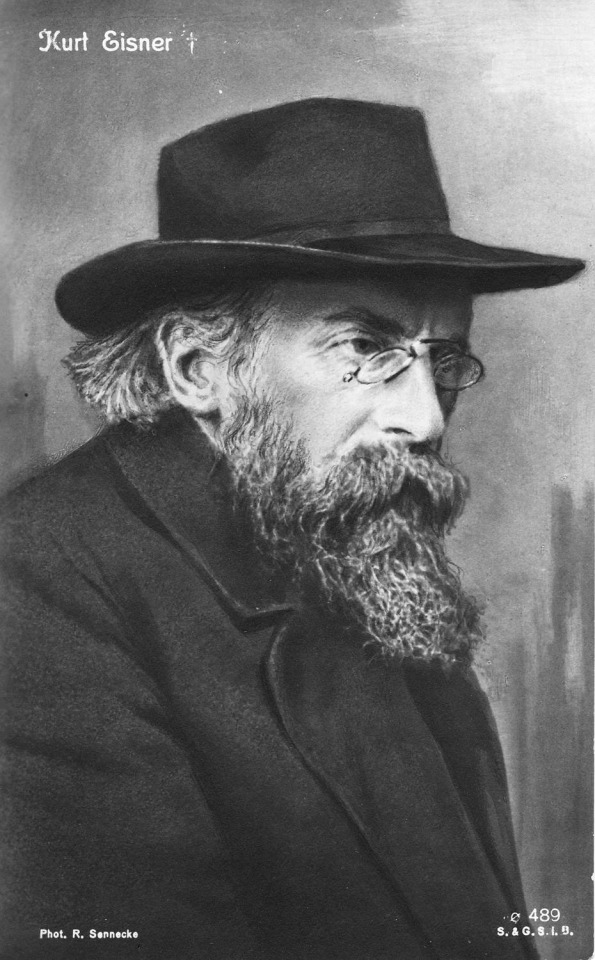
In the elections to the Bavarian state parliament on January 12, 1919, he only received 2 percent of the vote. When Eisner refused to ask for leniency for German prisoners of war at the Socialist Congress in Bern, many former soldiers turned away from him. He resigned as Prime Minister in February. On the way to this announcement he was attacked and killed by the young monarchist Anton Graf von Arco auf Valley. The communists saw this as an attack on themselves and claimed political opponents in the state parliament had planned the asassination. That's why a communist walked into the hall of the state parliament and shot the president, who had been an opponent of Eisner. He killed another deputy, injured another and finally killed an officer who tried to stop him on his way out. The result was another unrest throughout the city. Although Eisner had hardly any supporters left, his murder united many. The moderate socialist Hoffmann, who had replaced Eisner as president, had to flee to Bamberg. The Reds were able to gain power throughout Bavaria and set up their army.
There was anarchy in Munich, the "government" was concerned with trivial issues, while the city was starving because the farmers in the surrounding area refused to deliver food. The farmers and rural population were initially relatively neutral about the situation in Munich and did not want to get involved. However, when a requisition squad appeared to take away their food, the farmers drove them away and turned to the side that wanted to defend themselves against this gang: the Freikorps. The Korps Oberland was born under the leadership of Oberst von Epp, with more following.

Freikorps vs. Spartacists
Meanwhile in Munich, three new communist leaders emerged who now took over the command: the three Russians Axelrod, Lèvien and Leviné. Hardened by the fighting in Russia, they now started the terror in Munich. Armed groups roamed the city, looting and arresting anyone they suspected of having counter-revolutionary sentiments. They soon managed to assemble a powerful force of around 20,000 men. Hoffmann and his government in exile in Bamberg tried to quickly round up soldiers, but refused help from Prussia and therefore had to do without the Freikorps that had already been formed there. In April 1919, an army of Social Democratic soldiers was sent to Munich. Poorly equipped and with little discipline, they managed to reach Dachau, near Munich. There, however, parts of the Red Army confronted them and Hoffmann's army fell apart. Out of desperation, Hoffmann now had to turn to Prussia. The Reichswehrminister Noske, who had control of the Reichswehr (German Army) as well as the Freikorps, agreed to send troops to Bavaria. This was somewhat problematic because since the creation of the German Empire and thus the loss of Bavaria's independence, there have been currents in all political directions that strived for renewed independence. When Bavaria became part of the Empire, it retained great freedoms, one of which was that Prussian troops were not allowed to enter Bavarian territory. They knew that while the general population would be happy to be liberated from the Reds, it could also lead to new unrests.

The Freikorps sent were: the Görlitz Freikorps, which had liberated Dresden; the 2nd Guards Division Oberst Maquis, the 11th Cavalry Rifle Command, the Freikorps of Hesse and Thuringia, the 14th Cavalry Rifle Command, the Freikorps von Lützow, the Brigade Erhardt and the Oberland, Schaaf and Beck units made up of Upper Bavarian farmers. The 30,000 men strong units surrounded Munich in late April. In addition, shortly afterwards a rifle brigade under Oberst von Epp arrived from the south as well as the Freikorps Württemberg and Bogendörfer. From all corners of the country came the troops to liberate Munich.
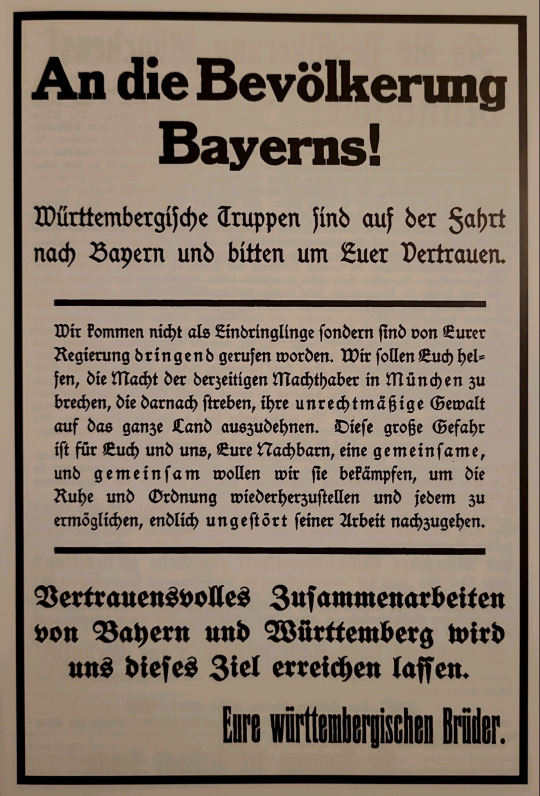
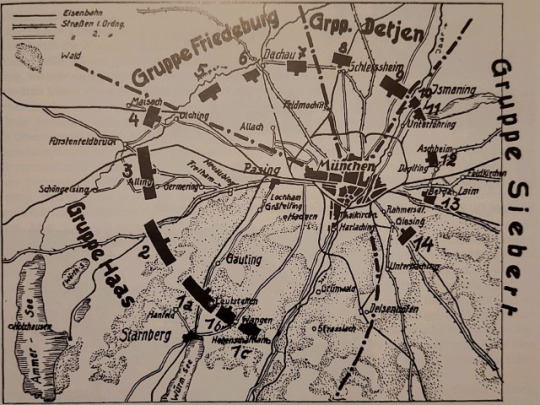
The communists were aware of the seriousness of the situation; this time they had to prove themselves against mostly experienced fighters. Part of the Red Army under the Bavarian communist Eglhofer disappeared quickly as the Freikorps approached; in a few days, 60,000 men became 12,000. But those 12,000 were ready for anything. In the suburban battles, the Freikorps' superiority soon became clear to everyone. The desperate communist government panicked and took hostages to the Luitpoldgymnasium, accusing them of having something to do with Eisner's murder. A last desperate attempt to incite the population failed. Axelrod, Lèvien and Leviné fled the city. When the Freikorps stood at the gates of Munich, the remnants of the red militia decided to kill the hostages.
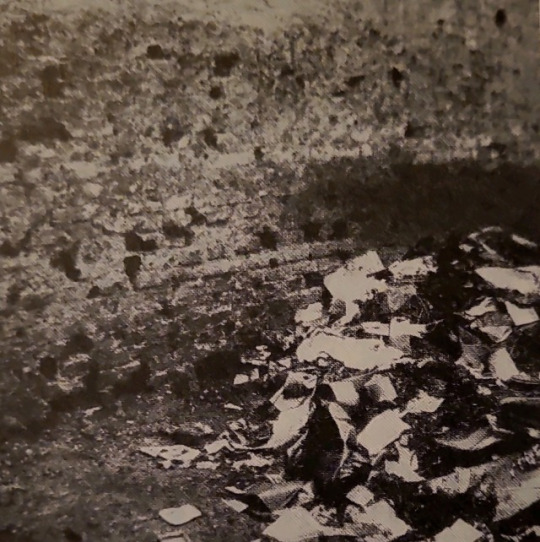
"Civilians come from Munich in a detour and bring us news. The Reds seem to have given up the open area up to the house limits. There is fierce fighting in the city. The news of the terrible hostage murder is becoming more and more specific and is also spreading among the resting troops." Spurred on by news of the atrocities in the city, the troops decided to attack immediately. On the morning of May 1, 1919, they managed to enter Munich. The government buildings were quickly taken. They met a final resistance at Stachus. The Reds had set up baricades there and were defending themselves with machine guns. But during the course of one day these too were taken. Munich was liberated.

The Red Terror had been removed but, it should be noted, was partially replaced by the Black Terror, although not to the same extent. There was no mercy for supporters of communism; those who were known were hunted down and executed. A tragic event was the murder of 21 Catholic workers who were members of the Saint Joseph community. As usual, they had gathered in a bar for their devotional exercise, but were mistaken for Spartacists and killed. This caused great horror in Catholic Bavaria. The predominantly Protestant soldiers of the Prussian Freikorps were accused of only wanting to satisfy their feelings of hatred and of using their opportunity here. The Freikorps were quickly withdrawn from Munich so as not to immediately destroy the current peace.
5 notes
·
View notes
Text
i finally learned the name of all of the rabbit students except for the twin girl with the big bow (i couldn't read her name f). and i still can't tell in most situations who is rudi and who is otto bc according to the book of the first movie, rudi is the one with the red stripes, but according to nette hoffmann's animatic of the first scene in the second movie, otto is the one with the red shirt. which can mean that a. either the book (which wasn't written by the scriptwriters of the movie and already changes some scenes) or the animatic got it wrong or b) rudi and otto switched colours from one movie to the other for no apparent reason. also in the scenes in the first movies where they're wearing their pajamas or their swimwear it's also impossible to tell who's who.
ok, so. there are thirteen rabbit students (without counting max). ernst (ernie in english), emmi, anton and luise are all named in both movies. the twins, rudi and otto, are named on the credits. i got the rest of the names from the aforementioned animatic. the girl with glasses is marie, the twin girl with two bows is irma, the blond girl is ilse, the boy with the thick head is hans. the remaining two boys look really alike (i'm assuming they're brothers), the taller one with some blond fur is kurt and the shorter one is fritz.
#i could've looked up their names before watching the movies 14 times but oh well#like i knew that animatic existed but i hadn't realised ALL of their names were there#also i think rudi and otto have different voice actors in german in the first movie#so i could try to use that to distinguish them once and for all#die häschenschule#rabbit school guardians of the golden egg#rabbit academy mission eggpossible#rabbit academy#rabbit school
1 note
·
View note
Text
Books I read in 2024
as the year closes, I'm sitting around the kitchen table with my parents, all of us doing various things of their own. I just finished reading the last book of the year (a history of the soviet union), and now I can finally share this list with you all. If you wanna talk about any of these books, feel free to message or tag onto this post or whatever :D
I'm also very curious what you all read in 2024, if anything stood out...
I wish you all a good 2025! Einen guten Rutsch, ihr Lieben <3
Books I read in 2024
Die Tribute von Panem X: Das Lied von Vogel und Schlange, Suzanne Collins
Vom anderen Ufer, Gerd Brantenberg
Stjerneskudd, Gudmund Vindland
The hunger games, Suzanne Collins
Det velsignede barn, Astrid Saalback
The prince and the pretender, Vincent Lardo
Der Schwalbenturm, Andrzej Sapkowski
Catching Fire, Suzanne Collins
Vaffelhjarte, Maria Parr
Mockinjay, Suzanne Collins
Valerie und die Woche der Wunder, Vitezslav Nezval
Im Wasser sind wir schwerelos, Tomasz Jedrowski
Medea, Euripides
Dödsdansen (Teil 1), August Strindberg
The old man and the sea, Ernest Hemmingway
Kurzgeschichten, Anton Tschechow
Queer Ukraine, DVIJKA collective
Die Dame vom See, Andrzej Sapkowski
Fräulein Nettes kurzer Sommer, Karen Duve
Die drei ??? und der Puppenmacher
Love, Mystery and Misery. Feeling in Gothic Fiction, Coral Ann Howells
Das Vorkommnis, Julia Schock
The last unicorn, Peter S. Beagle
Die Blechtrommel, Günter Grass
Carmilla die Vampirin, Sheridan Le Fanu
Der Junge, den es nicht gab, Sjon
Erzählungen, Valentin Rasputin
Heroes, Stephen Fry
Weiße Nächte, Fyodor Dostojewski
Der Palast im Himmel, Dianna Wynne Jones
Looking for Alaska, John Green
Russische Geschichte, Andreas Kappeler
Das Buch Ijob
A single man, Christopher Isherwood
König Ödipus, Sophokles
Rückkehr nach Reims, Didier Eribon
Dette blir mellom oss, Alexander K. Krag
Kabale und Liebe, Friedrich Schiller
Sauhund, Lion Christ
Die Lady Mcbeth aus dem Landkreis Mzensk, Nikolaj Leskow
Iphigenie auf Tauris, JoWo Gothe
Die arme Lisa, Nikolaj Karamsin
Lulu, Frank Wedekind
Die Elixiere des Teufels, E.T.A. Hoffmann
Time is a mother, Ocean Vuong
Mario und der Zauberer, Thomas Mann
Strange Tale of Panorama Island, Edogawa Ranpo
Mrs. Dalloway, Virginia Woolf
Richard III, William Shakespeare
Michael Kohlhaas, Heinrich von Kleist
Apologie des Sokrates, Platon
Das Mädchen, das in den Wellen verschwand, Axie Oh
Ein Tag im Leben des Ivan Dennisowitsch, Alexander Solchenizyn
Die göttliche Komödie, Dante Aligheri
Böse Geister, Fyodor Dostojewskij
Der Spieler, Fyodor Dostojewskij
Frauen und Macht, Mary Beard
Willkommen in Amerika, Linda Boström Knausgard
Der Schöne im Mohn, Dagmar Fohl
Kniven i ilden, Ingeborg Arvola
Tine, Hermann Bang
The flowers of Buffoonery, Osamu Dazai
My dark Vanessa, Kate Elizabeth Russel
Unwiederbringlich, Theodor Fontane
Mephisto, Klaus Mann
Konsten att inte hitte sig själv pa Bali, Zandra Lundberg
Gallant, V.E. Schwab
Gravböygnen vakner, Sigbjörn Mostue
And then there were none, Agatha Christie
48 clues into the disappearance of my sister, Joyce Carol Oates
Marmorhaut, Slavenka Draculic
Flowers in the attic, V.C. Andrews
Bored Gay Werewolf, Tony Santorella
Litt redd bare, Alexander Kielland Krag
Ein Held unserer Zeit, Michail Lermontow
Picnic at Hanging Rock, Joan Lindsay
En herrgardssägen, Selma Lagerlöf
Das Tal der Blumen, Niviaq Kornerliussen
The bloody chamber, Angela Carter
Isdraken, Michael Engström
Die Lüge, Mikita Franko
Plain Bad Heroines, emily m. Danforth
Die Erzählungen, Franz Kafka
The Penelopiad, Margaret Atwood
Geschichte der Sowjetunion, Susanne Schattenberg
1 note
·
View note
Photo



FRANZ ROGOWSKI & ANTON VON LUCKE 2021 • Great Freedom (Große Freiheit) • dir. Sebastian Meise
#franz rogowski#anton von lucke#große freiheit#great freedom 2021#filmedit#lgbtedit#perioddramaedit#intimacy#affection#gay couple#gay#lgbt#hans hoffmann#film#movie#period drama#paragraph 175#romancegifs#queer#queer media#sebastian meise#moviegifs#filmgifs#deutsche#couple#longing#romantic
207 notes
·
View notes
Text

Anton Hoffmann again, an artillery limber movement, sorry for the quality, I could not find a finer detail.
13 notes
·
View notes
Text
Entry of the Gladiators (Piano Solo sheet music)
Entry of the Gladiators (Piano Solo sheet music) by Julius Fučík
https://youtu.be/BGZI77zST5A "Entrance of the Gladiators" op. 68 or "Entry of the Gladiators" (Czech: Vjezd gladiátorů) is a military march composed in 1897 by the Czech composer Julius Fučík. He originally titled it "Grande Marche Chromatique", reflecting the use of chromatic scales throughout the piece, but changed the title based on his personal interest in the Roman Empire. Generally, the march is divided into three parts. The first part contains the melody that the trumpet keeps and the several supporting parts. The second part is the section where the low brass (mainly the tubas) take over with the chromatic scale-like role. Finally, there is a trio, or a softer melodic section, where there is a strong balance between woodwinds and low brass. The trio has a part similar to the second part with a chromatic scale-like sound. The piece is written in cut time and is originally written to be played at standard march tempo, but when played as a screamer it is usually played much faster. Today, it is best known for its association with circuses. History Czech composer Julius Fučík wrote the march on October 17, 1897, in Sarajevo, where he had been stationed as military bandmaster of the Austro-Hungarian Army since 1897. Originally, he called the piece Grande Marche Chromatique. The march demonstrates the state of the art in playing technology and the construction of brass instruments, which allowed fast and even chromatic gears in all instruments and positions. Fučík was so impressed by the description of a gladiator appearance in a Roman amphitheater in Henryk Sienkiewicz's 1895 novel Quo Vadis that he soon changed the title of his work. The phrase "entry of the gladiators" is known in two descriptions of Pompeii in 1877 and is probably older. On January 10, 1900, Kapellmeister Anton Fridrich (1849–1924, known for composing the regimental march "Khevenhüller-Marsch") created an arrangement for string orchestra for himself in Graz. In July 1900, the "Concert March for large orchestra", published by the sheet music printing house "Hoffmanns Witwe" in Prague, is listed under the title "Einzug der Gladiatoren" by Hofmeister. Further edits followed. In 1903 one of the Coldstream Guard Band's pre-recorded clay roller advertised by Columbia Records titled Entry of the Gladiators. In the same year, a piano solo sheet music with the title "Entry of the Gladiators / Thunder and Blazes" ("Donner und Feuersbrünste") was released. The phrase "Entrance of the Gladiators", which has existed since at least the 18th century, is also common in English. Hermann Ludwig Blankenburg published his farewell to the gladiators at the latest in 1904. In 1928, both pieces were recorded by the "Great Odeon Orchestra" on a plate (No. 85204). Adaptations and uses In 1901, American publisher Carl Fischer published a version of this march, arranged for American wind bands by Canadian composer Louis-Philippe Laurendeau, under the title "Thunder and Blazes". It was during this period that the piece gained lasting popularity as a screamer march for circuses, often used to introduce clowns. Today it is mainly known by this association. Laurendeau's version was also transcribed for fairground organs. In 1915 the New York Military Band recorded the march (Edison Records, 50214). Very popular in the 1930s, it was included as a military march in the repertoire of pieces imposed by the SS on prisoners' orchestras to accompany the departures and returns of the work Kommandos in Nazis concentration camps, notably in Buchenwald, where it appears in the orchestra's original scores, preserved at the Terezín Memorial. The first portion of the piece has been quoted in such songs as "Goodbye, Cruel World" (1961) by James Darren; "Palisades Park" (1962) by Freddy Cannon; "Yakety Sax" (1963) by Boots Randolph; "Tight Rope" (1972) by Leon Russell; "The Show Must Go On" (1973) by Leo Sayer, covered by Three Dog Night (1974); "Mr. Soft" by Cockney Rebel (1974); "Sideshow" (1974) by Blue Magic; "Carnival of Sorts" (1982) by R.E.M.; "Esther" (1989) by Phish; "Don't Get It Twisted" (2006) by Gwen Stefani; “Circus” (2022) by Stray Kids; and "Freak" (2022) by Demi Lovato. It is used in Nino Rota's score for Federico Fellini's film La Dolce Vita (1960). In the film version of Godspell (1973), Judas hums it when he begins his betrayal and crucifixion of Jesus. (In that adaptation, Jesus and all the disciples are dressed and made up as clowns.) The march receives the occasional concert hall performance, such as at the 2007 Last Night of the Proms.

Read the full article
#SMLPDF#noten#partitura#sheetmusicdownload#sheetmusicscoredownloadpartiturapartitionspartitinoten楽譜망할음악ноты
0 notes
Text
Old Vienna
Cafe Sperl…

Das Café Sperl ...
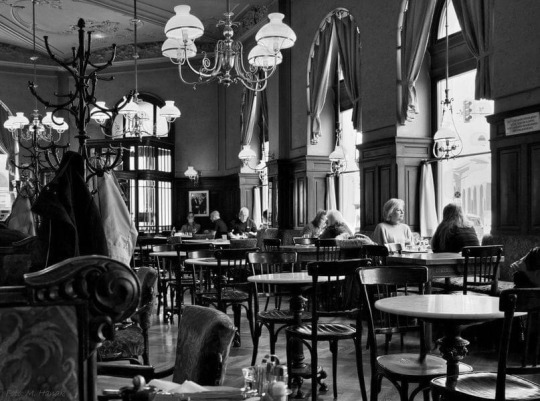
ist ein traditionsreiches, denkmalgeschütztes Wiener Kaffeehaus Ecke Gumpendorfer Straße und Lehargasse im 6. Wiener Gemeindebezirk Mariahilf.
1880 eröffnete Jacob Ronacher, Bruder von Anton Ronacher (dem Gründer des bekannten Etablissement Ronacher), ein Kaffeehaus unter dem Namen Café Ronacher im Eckgebäude Gumpendorfer Straße / Lehargasse. Die Ausgestaltung des Lokals im Stile eines Ringstraßen-Cafés mit Parkettboden, Stühlen von Thonet, Marmortischen, Kristallluster und Caramboltischen wurde von den Architekten Wilhelm Jelinek und Anton Groß ausgeführt. Noch im selben Jahr gab Ronacher jedoch das Geschäft auf und verkaufte es an die Familie Sperl, die es unter dem Namen Café Sperl weiterführte. 1884 wurde Adolf Kratochwilla Inhaber des Lokals, behielt aber den inzwischen etablierten Namen bei.
Zu den Stammgästen des Sperl zählten in der Zeit vor dem Ersten Weltkrieg eine kuriose Mischung aus Künstlern – Schriftstellern, Malern, Architekten, Komponisten, Musikern, Schauspielern – und Militärs der nahen k.u.k. Kriegsschule, zu letzteren zählten beispielsweise der spätere Chef des Generalstabs der österreichisch-ungarischen Armee Franz Conrad von Hötzendorf und Erzherzog Josef Ferdinand.
Von 1895 bis 1942 unterhielt der Künstlerbund Hagengesellschaft (aus dem 1900 der Hagenbund hervorgeht) hier seinen Stammtisch. Ebenfalls 1895 fand sich im Sperl der Siebenerclub, dem Josef Hoffmann, Leo Kleinradl, Adolf Karpellus, Maximilian Kurzweil, Koloman Moser, Joseph Maria Olbrich und Friedrich Pilz angehören, die später zusammen mit weiteren Künstlern die Wiener Secession ins Leben riefen. Darüber hinaus zählten in jener Zeit Joseph Lewinsky, Alexander Girardi, Edmund Eysler, Richard Heuberger, Karl Millöcker und Franz Lehár zu den Stammgästen des Sperl.
Nach dem Zweiten Weltkrieg nahm das Café seinen Betrieb wieder auf. 1968 übernahm Manfred Staub das Lokal von der Familie Kratochwilla und ließ es 1983 unter Erhaltung des denkmalgeschützten Ensembles renovieren. In den Folgejahren erlangte das Sperl verschiedene Auszeichnungen, so wurde es 1998 zum Österreichischen Kaffeehaus des Jahres ernannt und erhielt 2004 die Goldene Kaffeebohne. Zu den Stammgästen der jüngeren Vergangenheit zählten die Schriftsteller Jörg Mauthe, Robert Menasse und Michael Köhlmeier.
0 notes
